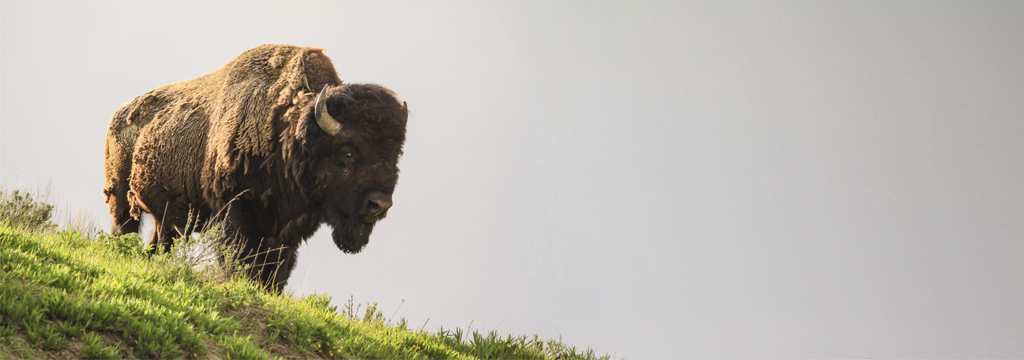A new report on the obstacles for a brucellosis vaccination program for the bison population in Yellowstone
 Animal Ethics has just released a new report on the prospects for vaccination against brucellosis for bison and other animals in the USA (more specifically, in the Greater Yellowstone Area). The report highlights a conflict between efforts that can be helpful for wild animals and measures that can be harmful for them.
Animal Ethics has just released a new report on the prospects for vaccination against brucellosis for bison and other animals in the USA (more specifically, in the Greater Yellowstone Area). The report highlights a conflict between efforts that can be helpful for wild animals and measures that can be harmful for them.
Disease is one of the factors affecting animals in the wild in ways that can significantly increase their suffering. While in some cases wild animal vaccination programs have been developed, in most there are no cures or effective vaccines available that can help wild animals and no effort to develop them. While this is often the case due to the natural spread of diseases, in other cases human actions facilitate the spread of such diseases.
In addition, the diseases that certain populations of animals have can affect animals that humans have an interest in using as resources. This can lead to programs aimed at improving the health of wild animals, but in some cases, it leads to programs whose goal is to kill the animals (or at least a certain number of them) who are affected by these diseases. The purpose of these programs would be to prevent the diseases from being transmitted to domesticated animals.
All these circumstances coincide in the case of the wild bison population in the Greater Yellowstone Area. Specific to this case is a longstanding conflict between the animal farming industry and wild animals in a national park in the United States.
Wild bison have lived continuously in Yellowstone National Park and surrounding areas in the northwestern United States since prehistoric times. Today two herds totaling approximately 5,500 bison spend most of each year inside the park. There are also about 125,000 elk and many other species of animals living there.
Colloquially known as contagious abortion or Bang’s disease, brucellosis is a disease caused by a group of bacteria of the genus Brucella. Up to 60% of Yellowstone bison are infected with brucellosis, which primarily infects hoofed mammals like cattle, elk, and bison. In ungulates, the disease primarily affects the reproductive system and mammary glands, often causing infertility, retained placenta, spontaneous abortions, and weakened newborn calves. In addition to affecting the reproductive organs, brucellosis may cause suffering to bison through general malaise, abscesses, chronic septic arthritis, lameness, weight loss, and bursitis. Vaccinating them against the disease could be a way of preventing the killings and protecting them from the natural harms related to it.
Early in the 20th century, the animal exploitation industry began pressuring the US federal government to reduce the bison population by killing them. The reason for this was the fear that bison would spread brucellosis to the cattle they exploit, leading to economic losses for the industry. It is worth noting that brucellosis was in fact most likely introduced to North America when infected cattle were imported from Europe in the early 1860s.
This new report explains the past and current situations concerning the spread of brucellosis in the Yellowstone area. The paper argues that there are problems impeding the success of a bison vaccination program but argues that vaccination programs targeting elk instead could be successful in preventing the spread of brucellosis in the area. However, there are significant political obstructions due to which it seems unlikely that a vaccination program of this kind will transpire in the near future. In addition to detailing this, the report also examines the historical, jurisdictional, and regulatory complexities involved in this issue, and whether other alternatives like contraception and spreading awareness and concern for animals in the wild can improve the situation.
We hope this study will help to shed light on this topic. You can read the full report here:
The feasibility of a brucellosis vaccination program for bison in Yellowstone National Park
This report is part of our work to investigate the best ways to help animals in the wild. For other works on this topic, some of our previously published studies include the following:
Introduction to wild animal suffering: A guide to the issues
Strategic considerations for effective wild animal suffering work
Surveying attitudes toward helping wild animals among scientists and students
Investigating the welfare of wild animals in urban environments